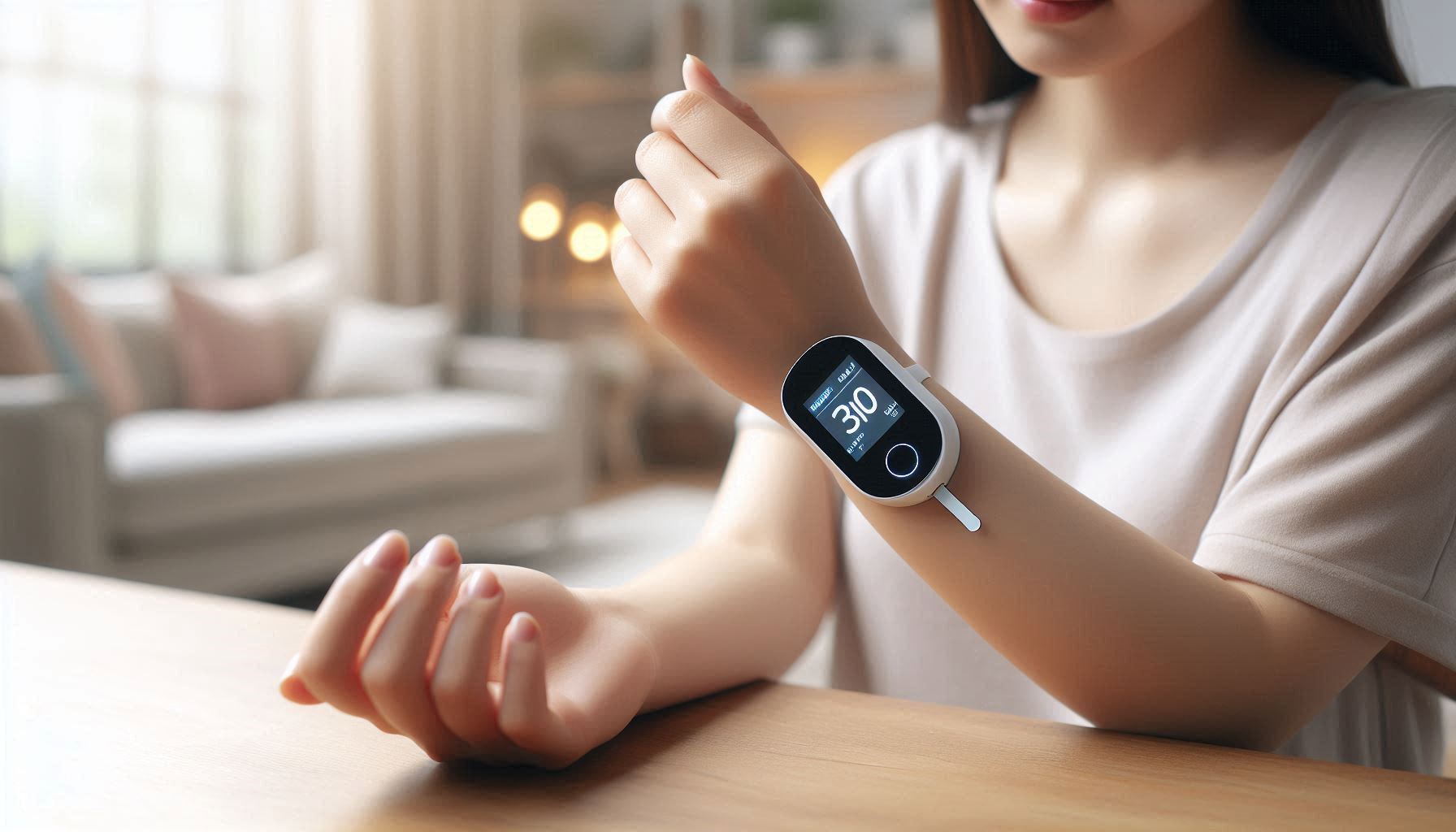In this article, we shall be looking into the topic of How Non Invasive Glucose Tracking Works: Optical Sensors Explained. These needle free wearables are changing the lives of diabetic patients in a huge way. The future looks bright now in a way that most would never have imagined just a few shorts years ago. Let’s get started!
Introduction
Glucose tracking is an essential part of life for millions of people around the world, especially those managing diabetes or monitoring metabolic health. Traditionally, this has involved methods that require breaking the skin, such as finger pricks or implanted sensors. While these techniques are effective, they can also be painful, inconvenient, and costly over time. In recent years, an innovative approach has begun to attract attention. Non invasive glucose monitoring using optical sensors. This technology promises to deliver accurate glucose readings without piercing the skin, offering a more comfortable and user friendly experience.
Optical glucose tracking has the potential to change the way individuals manage their health. By using light to measure glucose concentrations through the skin, it removes many of the barriers associated with traditional monitoring methods. From continuous real time measurements to integration with mobile apps, optical sensors are paving the way for more accessible and preventative healthcare solutions. In this article, we will explore exactly how this technology works, its benefits, drawbacks, costs, and what you should know before using it.
What is non invasive optical glucose monitoring
Non invasive optical glucose monitoring is a method of measuring blood sugar levels without penetrating the skin. Instead of drawing blood, it uses light at specific wavelengths to analyse glucose concentration in the interstitial fluid beneath the skin. The device sends light into the skin and measures how it is absorbed, scattered, or reflected. These patterns can be analysed to determine glucose levels in the body.
The technology is built on principles of spectroscopy, where light interacts with molecules in predictable ways. By using carefully chosen wavelengths, optical sensors can detect small changes in tissue that correlate with glucose levels. These readings are then processed by advanced algorithms to provide near instant results.
Key features of optical glucose wearables
Core features to look for
• Painless glucose readings without skin penetration
• Continuous or on demand monitoring
• Mobile app connectivity for tracking and trends
• Alerts for high or low glucose levels
• Compact wearable design
• Rechargeable battery with long life
• Data sharing with healthcare providers
• Integration with fitness and nutrition tracking tools
How optical glucose sensors work
Optical glucose monitoring relies on the interaction between light and biological tissues. The most common method is near infrared spectroscopy, where light in the near infrared range penetrates the skin and interacts with glucose molecules. Glucose has a unique absorption spectrum, meaning it absorbs and reflects certain wavelengths differently from other molecules. By measuring the intensity and pattern of reflected light, the device can estimate glucose concentration.
Some systems use Raman spectroscopy, a technique that measures the scattering of light to detect molecular vibrations specific to glucose. Others combine optical sensing with thermal or electromagnetic measurements to improve accuracy.
Once the light data is collected, it is processed by algorithms that filter out noise from factors like skin pigmentation, hydration, and temperature. The final glucose estimate is then displayed on the device screen or a connected smartphone app.
Benefits of optical glucose monitoring
Comfort and convenience
No needles, no pain, and no disposable supplies are required.
Continuous tracking
Many devices provide real time readings every few minutes, giving a complete picture of glucose trends.
Lifestyle integration
Devices often resemble watches, bands, or patches that can be worn all day without drawing attention.
Preventive healthcare
Even people without diabetes can track how food, exercise, and stress affect their blood sugar levels.
Cost savings over time
While the initial purchase may be higher, there are no ongoing costs for strips or sensors.
Pros and Cons
Pros
• Completely needle free
• Can provide continuous data
• User friendly and discreet
• Supports trend analysis and preventive health
• May reduce long term monitoring costs
Cons
• Accuracy still improving compared to invasive methods
• May require occasional calibration
• Some designs are sensitive to motion or environmental conditions
• Limited availability in some regions
• Initial purchase cost can be high
Price ranges
The cost of non invasive optical glucose monitoring devices varies widely depending on features and brand positioning.
• Basic consumer models for lifestyle monitoring may start at around one hundred and fifty pounds
• Advanced continuous monitoring systems may range from three hundred to five hundred pounds
• Research grade or clinical devices can cost over seven hundred pounds
Because there are no consumable parts, ongoing costs are generally minimal.
Who should use optical glucose wearables
Best suited for
• People with pre diabetes or type 2 diabetes who want comfortable monitoring
• Individuals seeking preventive metabolic health tracking
• Athletes tracking glucose responses during training
• Health conscious individuals monitoring diet and lifestyle impacts
• Older adults who find invasive methods challenging
Less suited for
• Type 1 diabetes patients who require precise insulin dosing based on readings
• Users in areas where devices are not yet medically approved
• People unwilling to confirm readings with a traditional test when necessary
How to get the best from your optical glucose wearable
Tips for optimal use
• Wear the device in the recommended location for consistent results
• Keep the skin clean and dry to improve light signal quality
• Avoid strong ambient light during measurements if using a spot check device
• Use the companion app to log meals, exercise, and other factors influencing glucose
• Review trends over time rather than relying on single readings
• Maintain and charge the device as per manufacturer guidelines
Limitations and challenges
While optical glucose sensors offer many advantages, they face unique challenges. Accuracy can be affected by skin thickness, pigmentation, temperature, and hydration levels. Motion during measurements can also introduce noise into the signal. Manufacturers are addressing these issues through improved sensor design, AI powered algorithms, and multi sensor integration.
Another challenge is regulatory approval. Medical grade optical glucose monitors must undergo rigorous testing to prove accuracy and safety, which can delay availability in some markets. Many consumer devices are marketed for wellness rather than medical use until approval is granted.
The future of optical glucose monitoring
Advances in miniaturisation, flexible electronics, and AI will likely make optical glucose sensors more accurate and accessible. Future devices may combine optical glucose tracking with other metrics such as heart rate, hydration, and stress levels, creating comprehensive health monitoring platforms.
Over time, optical monitoring could become the primary method for glucose tracking, replacing most invasive options. For millions of people worldwide, this would mean a more comfortable and proactive approach to managing their health.
6 Frequently asked questions
1. Are optical glucose monitors accurate enough for medical use
Some models meet medical accuracy standards, while others are best used for trend tracking.
2. Do they require calibration
Many current devices do, but some newer designs are calibration free.
3. How often can I check my glucose
Continuous systems provide readings every few minutes, while spot check devices can be used as often as desired.
4. Can children use optical glucose monitors
Yes, but suitability should be confirmed with a healthcare provider.
5. Are they waterproof
Many are water resistant, but specifications vary by model.
6. Will optical monitoring replace finger pricks
Eventually it might, but for now it is more likely to complement traditional methods.
Conclusion
Non invasive optical glucose monitoring represents a major step forward in wearable health technology. By using light to detect glucose levels through the skin, it eliminates the pain and inconvenience of traditional methods while offering continuous, real time insights into metabolic health. The technology is already making a difference for those who need or want to track their glucose regularly.
While challenges in accuracy and availability remain, ongoing research and development are rapidly closing the gap between optical and invasive monitoring. In the near future, optical glucose sensors could become a common feature in health tracking wearables, empowering more people to take control of their health with comfort and ease.
Our Thanks!
Our thanks to you for reading this article on How Non Invasive Glucose Tracking Works: Optical Sensors Explained. We hope that you have found it helpful with your search for a suitable non invasive glucose monitor. Take a look at our related article which is titled The Rise Of Non Invasive Glucose Monitoring: Are Needle Free Wearables The Future?
Please let us know in the comments which type of wearable health tech device you are currently using or plan to buy in the future! The comments section is just underneath this article!
**Here is a bit of transparency. Our website www.vertevia.com does contain affiliate links and Amazon links. So, if you did make a purchase through the website, we may receive a small commission. This is at no extra cost to you whatsoever. It’s just a way for you to support us as we continue to bring you top quality content**
All the best!
Eamon

